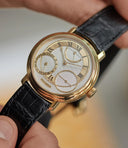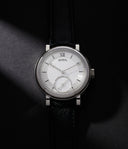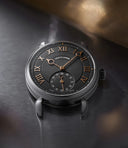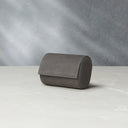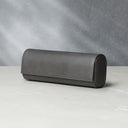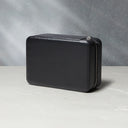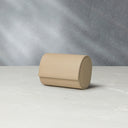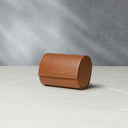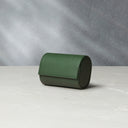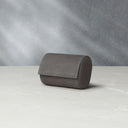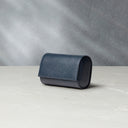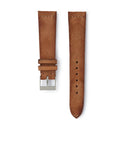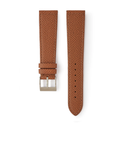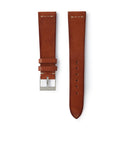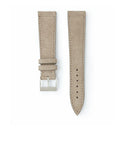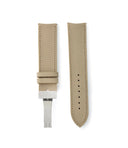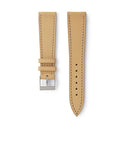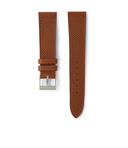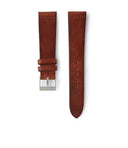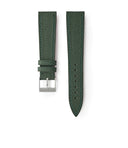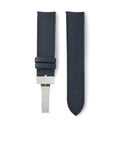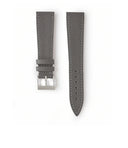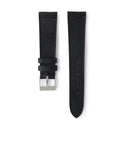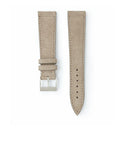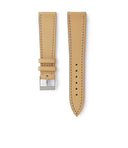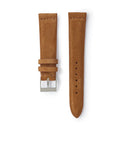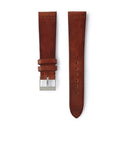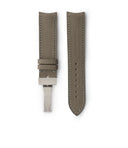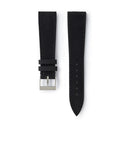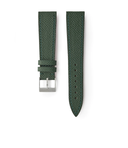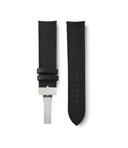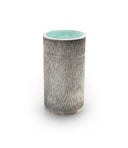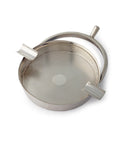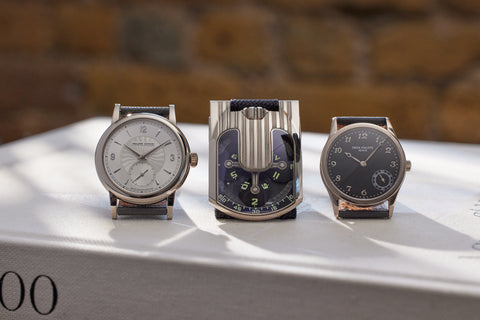When Romain Gauthier announced its atelier as the newest house in the Vallée de Joux, it was with the Prestige line. The HM was thoroughly traditional both on the dial and movement sides, featuring many of the details that remain in the brand’s offering to this day. This HMS is a special and unusual execution of this aesthetic, combining a rarely seen steel case from Gauthier with a meteorite dial. The watch is a limited edition piece, with just 10 examples created.
The 43mm steel case wears many details, all focused on ideas of balance. The rounded bezel is gently stepped from a midcase that is bulbous on the dial side, and concave as it meets the caseback. The lugs, soldered to the midcase, also have a similar concave profile. This is the first serially produced watch from Gauthier in stainless steel.
The display caseback is framed by a rim secured by the brand’s proprietary wave-patterned screws. The rim extends in a peninsula over the display caseback – this is where the back wind crown is housed. The caseback rim features recessed details to allow the wearer to both wind the crown while the watch is on the wrist and also to grip the serrated edges to pull it out when setting the time. The lack of a visible crown is yet another example of this play of symmetry and balance.
The dial is created from meteorite, specifically the iron meteorite discovered in 1931 in Australia, near the Henbury crater field - this is printed on the dial itself as well, just above the sub-dial. At just 0.8mm in thickness, this is an especially delicate and rare material that must be carefully ground and treated with an anti-corrosion substance. The pattern is especially striking, and is brought out of the material after a nitric acid bath, which have a striated Widmanstätten pattern thanks to the iron and nickel combination found within the stone.
The offset, overlapping dial display features an outline of the dial displays in white, so that the stone is displayed to its best effect. The main dial features hours and minutes, with white gold markers at each hour. These are filled with SuperLumiNova. The diamond-shaped, deep grey hands are similarly treated. The seconds sub-dial features a ring of Arabic numerals printed in white.
Visible through the display caseback is the manual-wind calibre 2206, wearing a deep, matte black appearance with silvery accents that calls to the darkness of space, with bridges wearing remarkably even circular satination. The finishing is exactly what Romain Gauthier has come to be known for, with skeletonised bridges with lavishly detailed inner angles, the same heavy anglage adorning all bridges, and Vallee de Joux-style finger bridges. The multi-layered appearance is accentuated by the range of finishes employed – the baseplate, that peeks from under some of the wheels, wears circular graining, while a level up from that is adorned with a brushed finish. The tip of the escape bridge is black polished, as is the click on the ratchet wheel and all the visible screws. The calibre manages 60 hours of autonomy.


































































































